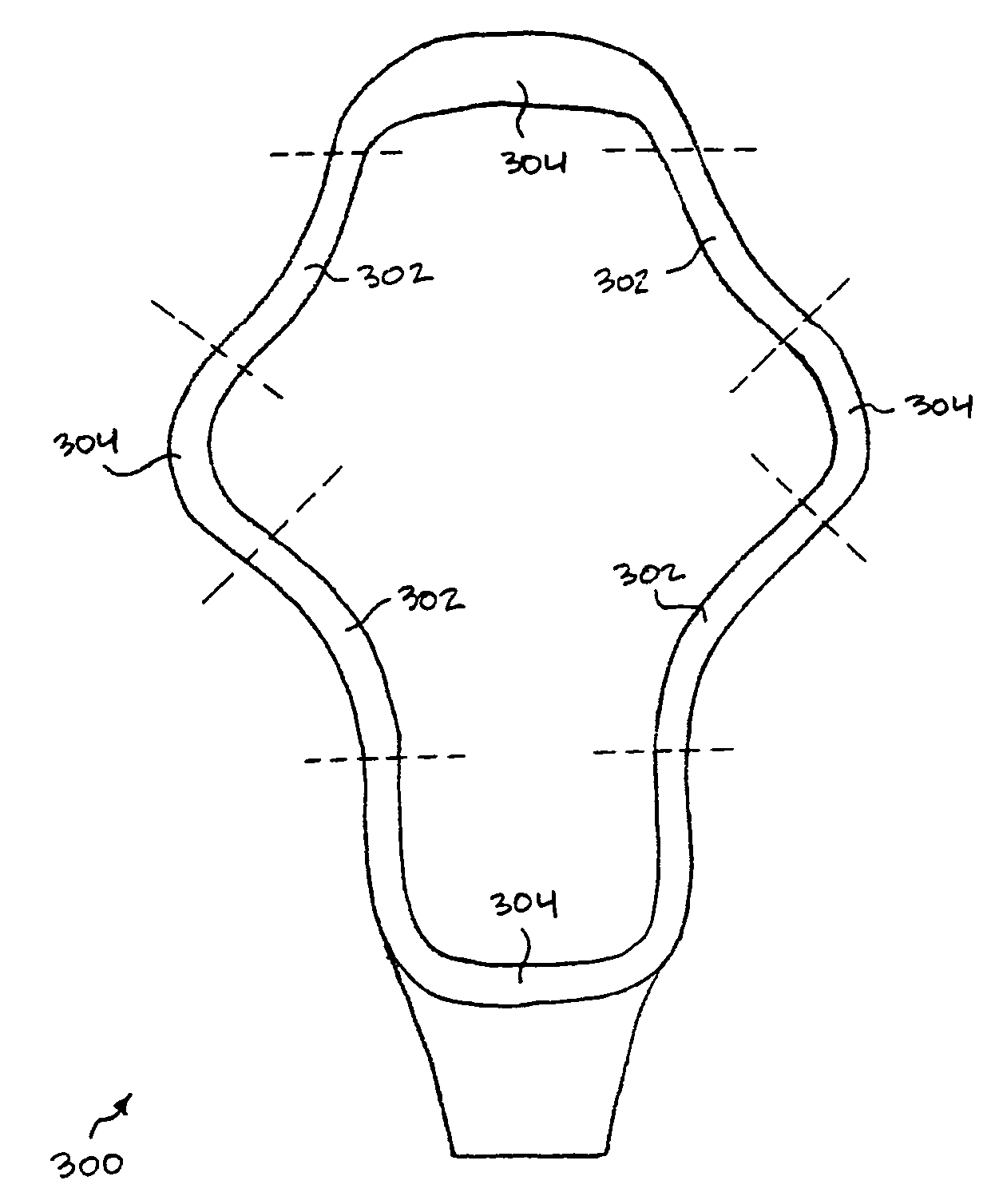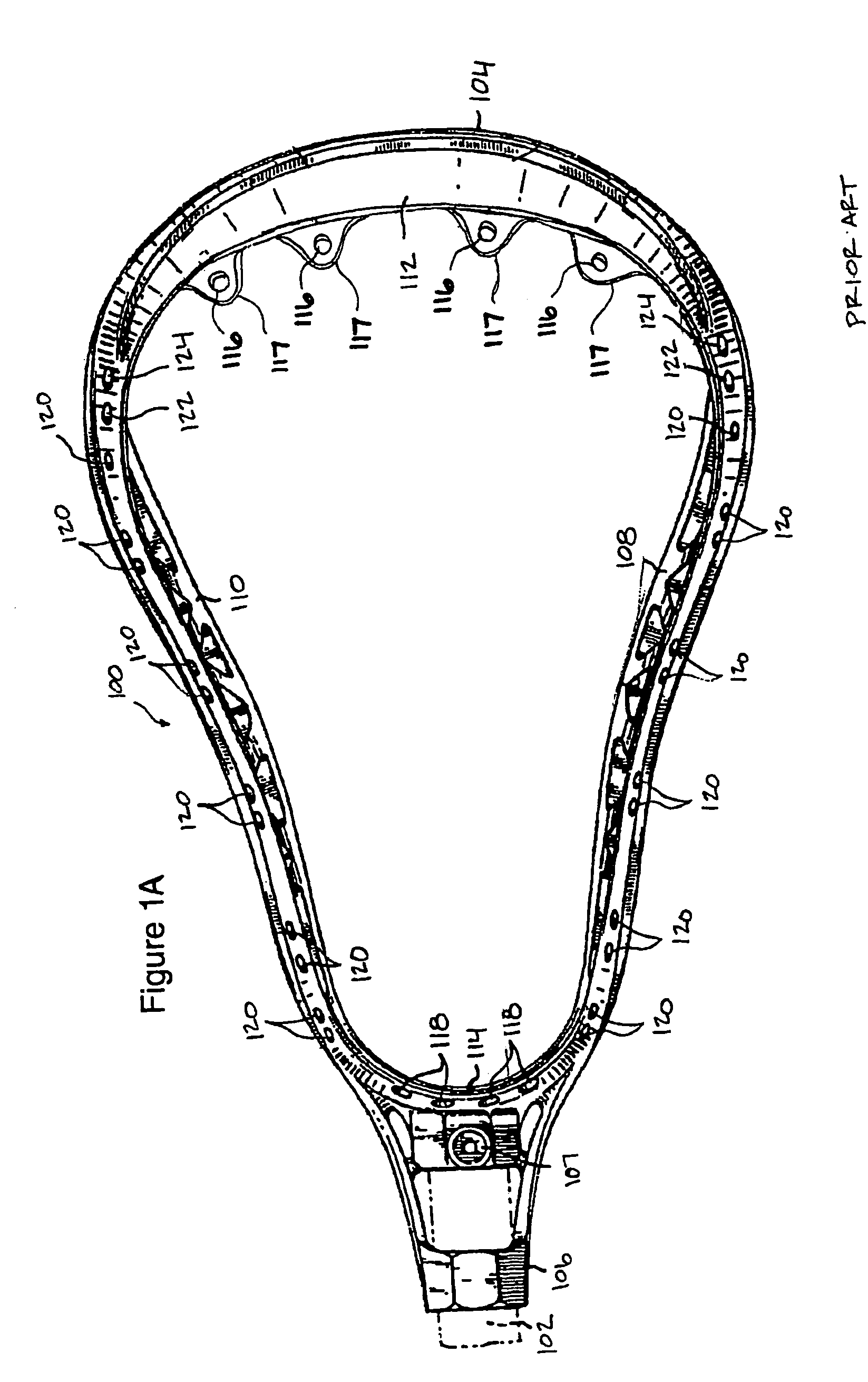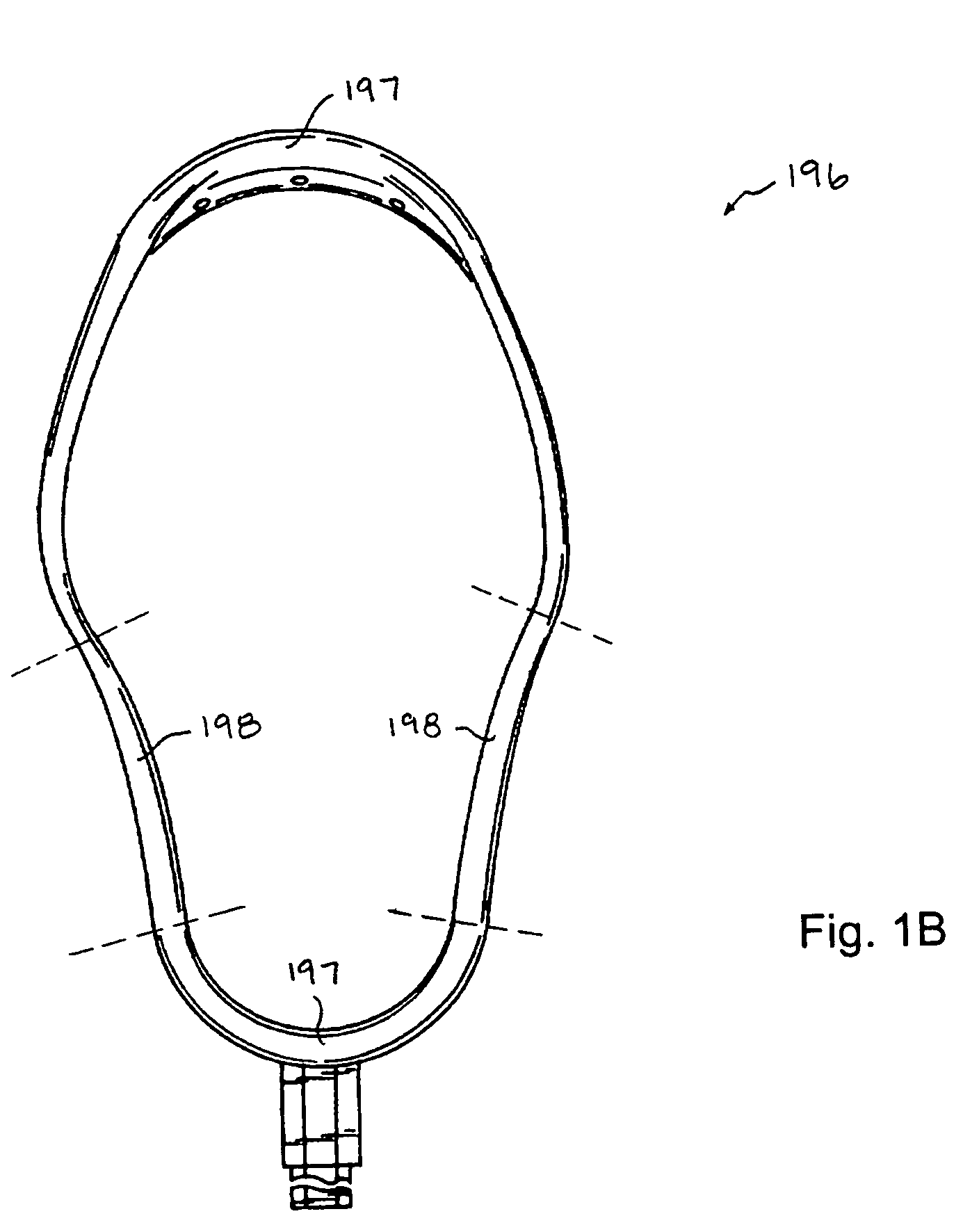Lacrosse head having a wide catching area and channeled thongs
a technology of lacrosse stick and catching area, which is applied in the field of lacrosse sticks, can solve the problems of increasing the area, increasing the difficulty of catching balls, and increasing the difficulty of controlling and keeping the ball, so as to achieve the effect of wide catching area
- Summary
- Abstract
- Description
- Claims
- Application Information
AI Technical Summary
Benefits of technology
Problems solved by technology
Method used
Image
Examples
Embodiment Construction
[0032]FIG. 2 illustrates an exemplary lacrosse head 200 according to an embodiment of the present invention. As shown, lacrosse head 200 includes a juncture 206, sidewalls 208 and 210, a scoop 212 joining the sidewalls at their ends opposite juncture 206, and a stop member 214 joining sidewalls 208 and 210 at their ends nearest juncture 206. A handle (not shown) fits into and through juncture 206, and abuts stop member 214.
[0033]As shown by the dotted lines 298 and 299 in FIG. 2, lacrosse head 200 is generally described herein with reference to three sections of the head: a rearward section 220, a catching section 222, and a forward section 224. As shown, rearward section 220 is nearest the ball stop 214 and forward section 224 is nearest the scoop 212. Catching section 222 is disposed in between rearward section 220 and forward section 224.
[0034]In a particular implementation of this embodiment of the present invention, the distance 226 from the middle of ball stop 214 to the end o...
PUM
 Login to View More
Login to View More Abstract
Description
Claims
Application Information
 Login to View More
Login to View More - R&D
- Intellectual Property
- Life Sciences
- Materials
- Tech Scout
- Unparalleled Data Quality
- Higher Quality Content
- 60% Fewer Hallucinations
Browse by: Latest US Patents, China's latest patents, Technical Efficacy Thesaurus, Application Domain, Technology Topic, Popular Technical Reports.
© 2025 PatSnap. All rights reserved.Legal|Privacy policy|Modern Slavery Act Transparency Statement|Sitemap|About US| Contact US: help@patsnap.com



